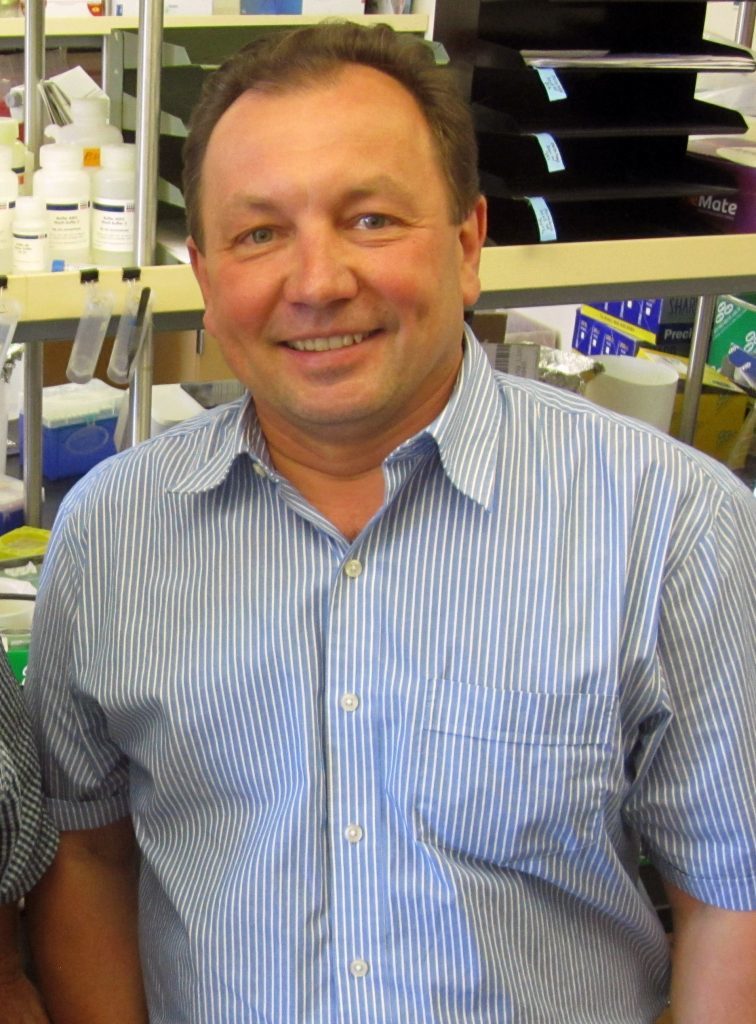
Meet Petr Tvrdik, PhD, Assistant Professor of Neurosurgery & Neuroscience at UVA School of Medicine.
This post is part of a series of interviews with new and junior faculty. Stay tuned for more interviews with your colleagues!
Q: How long have you been at UVA and where were you before you came to UVA?
I accepted a faculty position at the University of Virginia in November 2017. Prior to my appointment, I worked a number of years at the University of Utah, primarily in the group of Dr. Mario Capecchi. During my tenure with him, I learned a lot of developmental biology, molecular genetics, and functional neuroscience. It was exciting to live through the time when Mario was awarded the Nobel Prize in Physiology or Medicine in 2007 for the development of a technology called gene targeting. Based on his own work and research by Oliver Smithies and Martin Evans, gene targeting by homologous recombination enabled precise modifications in the mouse genome. It opened wide possibilities for studies of gene function and disease association, limited essentially only by investigator’s imagination. The Capecchi team used this powerful technology for many seminal discoveries, pertaining to gene function in limb and nervous system development, causes of sarcoma cancer and hematopoietic system disease.
Q: Is there something that you’ve worked on or accomplished in your career that you’re particularly proud of or glad you were able to experience?
I became interested in the hematopoietic cells of the brain, microglia, and how they function in normal and diseased brain. Using my skills in mouse genetics, I developed a transgenic mouse with several Utah collaborators which effectively indicated intracellular calcium activity in various brain cells, including microglia. Changes in calcium concentrations are important signals that exert much control over how brain cells work. Information on microglial calcium in the live brain has been lacking for technical reasons. Using our reporter mouse, and live brain imaging with two photon microscopy, we have discovered synchronized waves of calcium in the stroked brain. Because high calcium levels in microglia can lead to production of inflammatory signals, understanding and managing calcium in microglia may have positive effect on stroke severity and outcome. In addition to this narrowly focused project, I participate in several other projects focused on different aspects of stroke, in collaboration with Dr. Yashar Kalani.
Q: When you were a kid, what did you want to be when you grew up?
It may sound cliche, but I have been interested in the science of biology ever since I can remember. I grew up in former Czechoslovakia that had a strong tradition in entomology and botany research. After all, the discovery of the basic principles of inheritance were made by Gregor Mendel in the Moravian town of Brno. I was fascinated by the link between form and function in living things, down to microscopic levels. My keen interest helped me to get accepted to the Charles University in Prague, one of the oldest universities in continental Europe. In college, my interests shifted from entomology and botany to molecular biology and genetics. After I completed my graduate training in the Czech Academy of Sciences, I moved to Stockholm, Sweden, where I took an inspiring course on transgenic mice at the Karolinska Institute. My background in mouse transgenic techniques and molecular biology were important assets in establishing a collaborative project with Dr. Capecchi in Utah, which resulted in my moving there.
Q: A favorite spot to grab lunch during the day?
The salad menus at the Hospital cafeteria are fine, and the convenience is hard to beat.
Q: Do you have any children or fur babies at home that you would like to tell us about?
Two of my children are grown up, enrolled at the University of Utah, and one of my daughters is applying for colleges in Virginia.
Q: Do you have a favorite local restaurant or hangout spot?
Public Fish and Oyster offers amazing seafood experience; it tops my list. But Charlottesville is home to so many excellent restaurants that probably anybody’s taste can be satisfied.
Q: Anything else you’d like to add?
UVA combines the long tradition of a top university with a relatively small community setting, which makes this place very unique.
Filed Under: Interviews, Junior Faculty Interviews

Comments